| There are lots of red cliffs in this area. Some are actually
called the Vermilion Cliffs and these can be seen in the distance as we
approach Bryce Canyon National Park. | 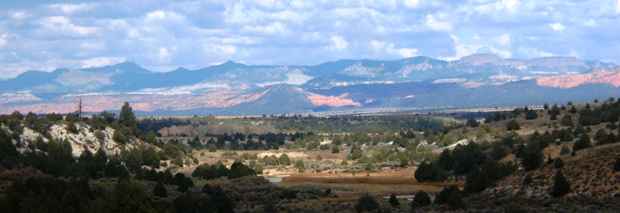 |
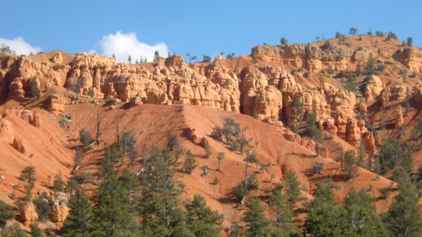 | But first we pass
through a small park known as Red Canyon. This is because the canyon sides
are particularly red. |
| The formations are a small imitation of what is yet to come with
the now familiar multi-coloured strata and sandy soils. | 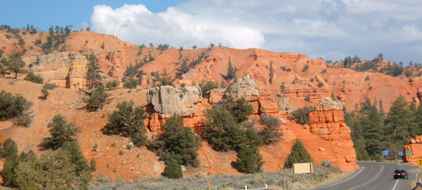 |
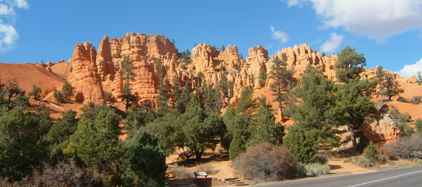 | The problem is that
the sun is so strong sometimes the red gets washed out but you still know
you are in a serious canyon. |
| These piles are called hutus, presumably an indian word. The
original natives probably have multiple words for rock formations just like
the Inuit do for snow. | 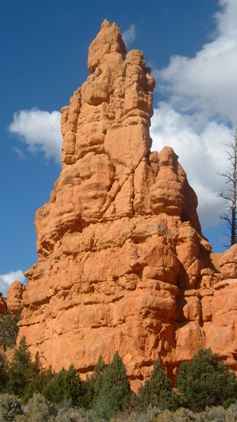 |
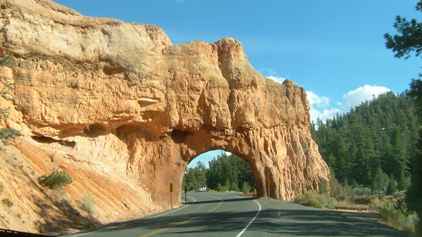 | This is the sort of
rock structure which will produce natural bridges, but I think this one was
man-made. |
| And so we reached Bryce Canyon. It was late in the day so we only
had a brief look from Sunset Point. Unlike Zion where you are on the canyon
bottom looking up, here you are at the top looking down. | 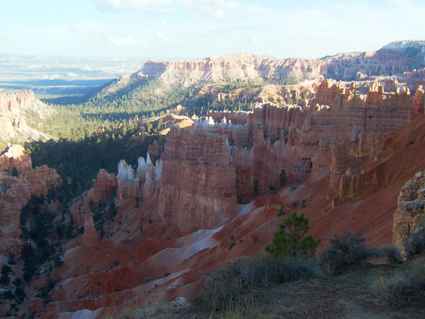 |
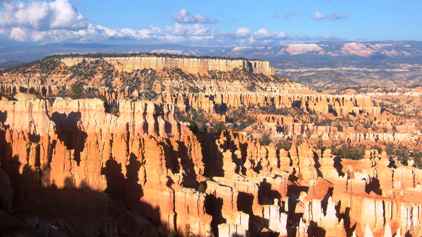 | There are thousands
upon thousands of columns as the water over the ages has eroded the soft
stones and washed them away, a process which is continuing today. The late
afternoon sun casts deep shadows which make the formations stand out
particularly well. |
| Each of these parks seems to be higher or deeper than the
previous one. Here the depth is amazing. With so little wind, you can here
the echoes of the voices of the people wandering around in the amphitheatre
below. | 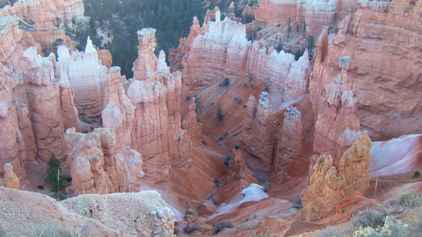 |
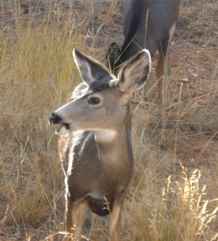 | Evening is also when
the wildlife comes out and we saw several deer browsing at the roadside.
They seemed very used to people, and even the young foal is quite
comfortable with our close presence. | 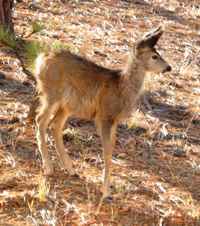 |
| The black ravens also abound, scavenging from dead wildlife and
anything edible the humans leave behind, although this one was struggling a
bit with a cookie. | 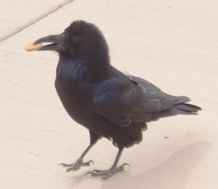 |
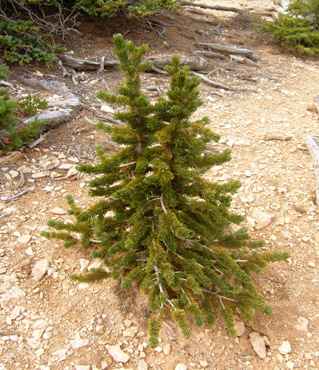 | One of the
characteristic trees in high dry areas is the bristlecone pine. There is a
trail which passes several. This is a 'young' one but since they are very
slow growing could still be rather older than we are. The really old ones
look very wizened, not surprising as they can be over 1,500 years old. They
are believed to be the oldest living organism on earth. |
|